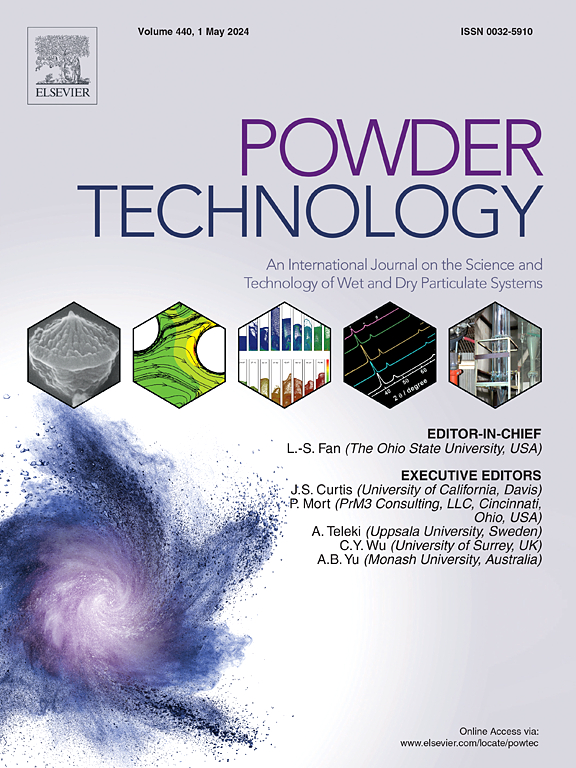Investigation of multi-field coupling performance in a binary-mixture fluidized bed reactor for FCC-PDH coupling process: Effects of key process parameters
IF 4.5
2区 工程技术
Q2 ENGINEERING, CHEMICAL
引用次数: 0
Abstract
The multi-field coupling performance of a binary-mixture fluidized bed reactor was investigated for the novel FCC-PDH coupling process, focusing on key process parameters. A validated numerical model demonstrated deviations within ±10 % for flow and reaction simulations. Results revealed favorable temperature profiles and reaction equilibrium, with a 113.15 K reduction in catalyst circulation temperature under an initial packing temperature of 773 K and a regeneration temperature of 873 K. This reduction optimized FCC reaction conditions by lowering the oil-catalyst contact temperature. Propane conversion exceeded 70 %, with a distinct “secondary plateau period” observed in axial reaction intensity, highlighting the interplay between heat transfer and reaction kinetics. Increasing the catalyst packing temperature from 773 K to 873 K reduced the thermal equilibrium height from 3200 mm to 2500 mm and boosted propane conversion from 80.11 % to 99.51 %, despite a decrease in the temperature drop of the circulating catalyst from 195.1 K to 89.9 K. Lower regeneration temperatures improved temperature uniformity and reduced catalyst temperature drops. At a flotsam packing ratio of 0.28, the optimal conversion of 81.63 % was achieved, ensuring efficient mixing and continuous endothermic dehydrogenation. These findings provide valuable insights for optimizing FCC-PDH industrial designs, emphasizing the importance of parameter tuning to enhance process performance and energy efficiency.

求助全文
约1分钟内获得全文
求助全文
来源期刊

Powder Technology
工程技术-工程:化工
CiteScore
9.90
自引率
15.40%
发文量
1047
审稿时长
46 days
期刊介绍:
Powder Technology is an International Journal on the Science and Technology of Wet and Dry Particulate Systems. Powder Technology publishes papers on all aspects of the formation of particles and their characterisation and on the study of systems containing particulate solids. No limitation is imposed on the size of the particles, which may range from nanometre scale, as in pigments or aerosols, to that of mined or quarried materials. The following list of topics is not intended to be comprehensive, but rather to indicate typical subjects which fall within the scope of the journal's interests:
Formation and synthesis of particles by precipitation and other methods.
Modification of particles by agglomeration, coating, comminution and attrition.
Characterisation of the size, shape, surface area, pore structure and strength of particles and agglomerates (including the origins and effects of inter particle forces).
Packing, failure, flow and permeability of assemblies of particles.
Particle-particle interactions and suspension rheology.
Handling and processing operations such as slurry flow, fluidization, pneumatic conveying.
Interactions between particles and their environment, including delivery of particulate products to the body.
Applications of particle technology in production of pharmaceuticals, chemicals, foods, pigments, structural, and functional materials and in environmental and energy related matters.
For materials-oriented contributions we are looking for articles revealing the effect of particle/powder characteristics (size, morphology and composition, in that order) on material performance or functionality and, ideally, comparison to any industrial standard.
 求助内容:
求助内容: 应助结果提醒方式:
应助结果提醒方式:


